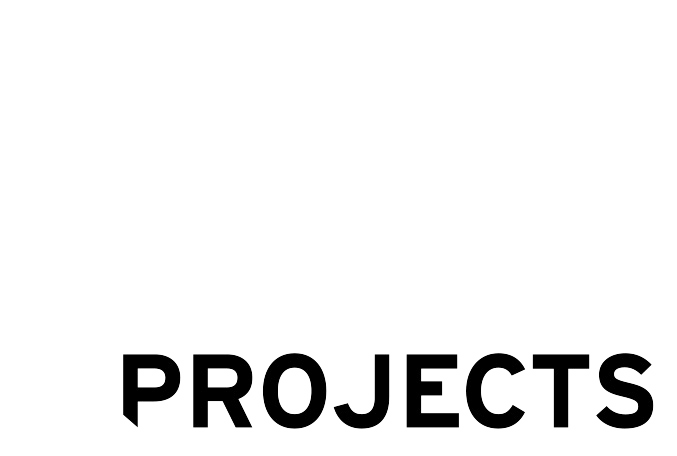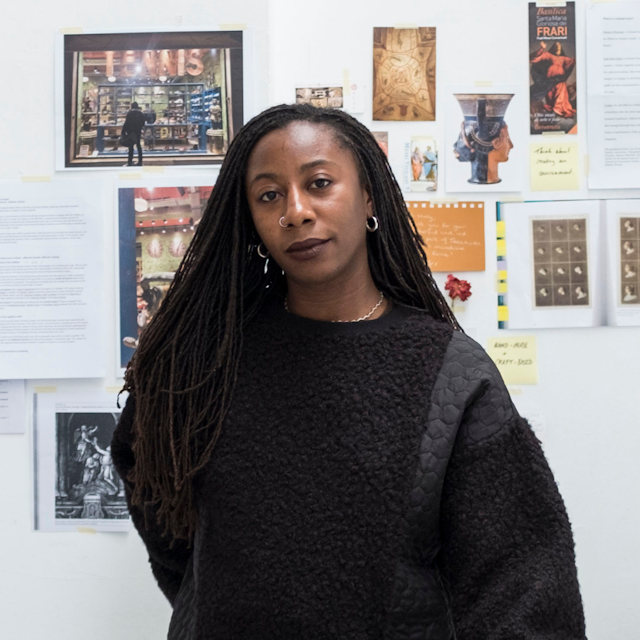After the launch of her first public mural, artist Holly Graham sat down with UP Projects’ Associate Producer, Sophia Hinton-Lever to discuss her thinking and process behind the work. Stop and Smell the Flowers by Holly Graham was commissioned by Barnet Council and curated by UP Projects and can be visited in Edgware now!
Sophia Hinton-Lever: Through your mural, Stop and Smell the Flowers, you look to raise awareness of the climate emergency, focussing on access to clean air and green space. Could you tell me why you were interested in exploring these issues, in relation to your work in Edgware?
Holly Graham: Around the time I was awarded the project, I was thinking about my own living situation, and became aware, as I was looking at options of new places to move to of the impact of air quality and how this is affected by so many social and financial factors. I was also cycling a lot, and thinking ‘what are we breathing day to day?’ and ‘how healthy is it to be on a bike nipping around London, behind a stream of traffic?’
And then as I was starting to look into it more, I became aware of Ella Kissi-Debrah, who was just seven years old when she passed away in 2013 of a respiratory condition - she was the first person to have air pollution listed as a cause of death in the UK. As a result of this there has been a move to make access to clean air a right for all, and I was interested in the histories of clean air acts. Air pollution isn't particularly a new problem. When we think about The Great Smog around 70 years ago or so, that was a huge issue, which was very visible, and now it's less visible, but it's still impacting our climate and health.
When we think about the climate emergency it can feel huge and nebulous – I wanted to think about the impact on bodily health – how that can be accessible to people in terms of a direct correlation between the effects we’re having on our bodies and the planet.
And I wanted to think through some of these things in dialogue with young people.
Sophia Hinton-Lever: Yes! You worked with over 75 young people in the development of this work. Could you tell me a bit more about how you involved these local communities in your process?
Holly Graham: The starting point for that was the site itself which operates as a platform for broadcast. I was thinking a lot about the potentials of that space to send messages out into the world and to the general public. And so, I wanted to work with young people to reflect on their thoughts around access to clean air and green space, but with a view to be able to then broadcast some of their thoughts and responses using the site out into their local area.
I worked with school groups and a youth group and did a drop-in session at Edgware Library, which was all around collage-based poster making, as a kind of quick, accessible way of using the language of signposting and advertising to enable the young people to put out their messages on posters - rooted in this was conversation around clean air and green space.
I presented different slogans and then the young people generated their own. We were able to showcase some of the posters they created as an interim installation - blowing them up to a really large scale and flyposting them on the wall, which allowed a direct line of broadcast of their words into the space.
There was a real range of messaging, one of which became the central text in the final artwork.
Sophia Hinton-Lever: And what was the full slogan that you finally drew from?
Holly Graham: ‘Stop and Smell the Flowers – wait, without your help, there won’t be any’. I really, loved that, but I also felt like the beginning part resonated most in terms of its call to action - It asks two things; it invites the passer-by to stop and take stock, both of the potential loveliness around them, but also to take stock of things that might need to be grappled with.
There was also another strand of the engagement as well, which was with Middlesex University students. That was specifically thinking about the platform offered by the digital advertising screen. Working with Clean Air Barnet and Middlesex University, the students developed concept designs for these infographics, which would channel air quality data gathered that they've been like looking at to communicate strategies for countering poor air quality and broadcast them locally.
Sophia Hinton-Lever: There are so many different parts of this project and some of them almost took on a life of their own. Were there any particular highlights that stand out for you?
Holly Graham: One highlight was definitely inviting the young people down to the interim mural launch and seeing their reactions when they saw their work blown up in public space. I think that's a really special thing to have your work platformed in that way, and for it to operate publicly, not just in your house, not just on your mantelpiece or on your mum's fridge, but to be in the place that you're navigating day to day.
Sophia Hinton-Lever: The mural is located on a really busy High Street, just outside Edgware tube station so it's really a place that people encounter just going about their day-to-day business. What would you like those audiences to feel or take away from it?
Holly Graham: I'm really interested in how people engage with work in such different ways, particularly when it's in public space. There might be someone who is just visiting Edgware just that that once, and there are likely to be people who are commuting to and from work or using the tube regularly or the bus, and so are repeatedly encountering the work, and therefore, seeing the screen changing with these different messages. And maybe reading ‘Stop and Smell the Flowers’ on it's different registers with each encounter.
Perhaps there are people driving by quite fast, so just catching a glimpse, and maybe having it as a visual reference. And then, there might be someone who pauses and takes a moment to look a bit closer and follows the link and goes and reads the Clean Air Barnet Air Quality Data Report that's online alongside Barnet Council's air quality action plan.
So, there'll be these really very different levels of engagement with the work.
There's also a flower seller just in front of the wall. And so, there are these really beautiful, kind of almost poetic and kind of happenstance connections as well that start to happen, just visually.
I guess I'm really happy and open to people reading the work in all sorts of different ways.
Sophia Hinton-Lever: This is the first project you’ve created at this scale in the public realm – how has the commission influenced your practice?
Holly Graham: I feel like with every project I do, I learn something new. You know, I've never done a mural before. What was interesting was that translation of the initial designs, which I worked on digitally, to thinking about how they operate in, real, three dimensional, and much larger space. I think working alongside multiple partners, drawing on the curational expertise of UP Projects and then the installation expertise from Any Surface, who painted the mural, was invaluable to translating what I had in mind into the real world.
Sophia Hinton-Lever: You’re up to so much amazing stuff – can you tell me a little bit about what else you’re working on right now?
Holly Graham: I’m doing some work at the moment with Manchester Art Gallery, which has been really interesting. It's a research residency and commission, which is part of a wider project called 2020, initiated by UAL Decolonizing Arts Institute. And within that, I'm thinking about and responding directly to Manchester Galley’s textiles and costume collections with a sort of focus on thinking about histories of cotton and labour - exploitative labour, industrial labour and enslaved labour, and also interrogating the foundations of the museum in terms of the finances that were integral to setting it up.
I also have an ongoing project with arts organisation TACO! in Thamesmead, which is working with the community archive there, thinking about histories of anti-racist organising in the early 90’s. We’ve got some funding to develop some public artworks that remember some of that community work- another public realm project, with a slightly different kind of focus.
Sophia Hinton-Lever: Wow these projects sound brilliant! Thank you so much, Holly, it was so great to chat through these questions with you and to work with you on Stop and Smell the Flowers!
Find out more about Stop and Smell the Flowers including how to visit here.




